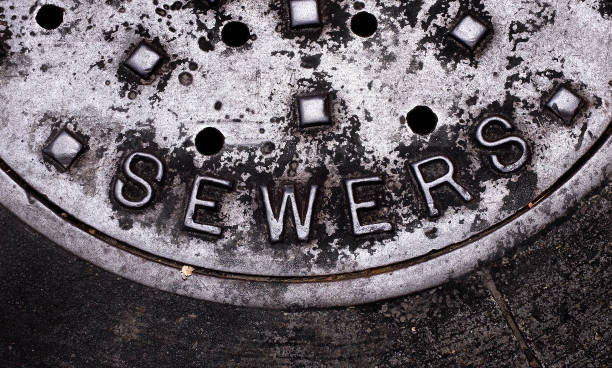The background & social context
Dignity is an inalienable right which is part of the fundamental right to life. Justice systems all over the world have held human dignity to be the most important, fundamental, inalienable and transcendental of rights. Yet, even after more than 70 years of independent India we find a section of the society, the scavenging community, being deprived of this and being predominantly engaged in the practice of manual scavenging. The Supreme Court found in 2014 that there were over 9.6 million dry latrines in India which required manual emptying. In other data points, there are over 75 million households, which are connected to septic tanks that may require manual scavenging, comprising 40% of the households. Traditionally, entire cleaning of the septic tank is done by manual scavengers, as shown below in Fig.1
Fig. 1: Photograph of a manual scavenger entering inside the manhole to clean the Septic Tanks.
Indian law, the Prohibition of Employment as Manual Scavengers and their Rehabilitation Act 2013, which is the current law against manual scavenging, prohibits dry latrines and all kinds of manual cleaning of excrement as well as cleaning gutters, sewers, and septic tanks. This was an improvement from the earlier 1993 law which only gave importance to dry pit latrines. The act of 2013, apart from recognizing this dehumanizing practice arising from the inequitable caste system, also recognizes how manual scavengers are prone to serious injury and are always at a risk of death. The act envisages that sewers should be cleaned mechanically while manual scavenging will only be permitted in exceptional cases, with safety equipment by the employer. If unfollowed, this is considered a criminal offence even when it does not result in injury or death. The offender can be charged with a maximum of five years imprisonment and a fine of five lakh rupees. Additionally, an association of safai karamcharis, called Safai Karamchari Andolan, led by Bezwada Wilson (Ramon Magsaysay Awardee) has been instrumental in bringing the attention of common public to the issue and rehabilitating some of them.
Despite these efforts the practice continues unabated. Deaths arising from manual scavenging are commonplace in India, (1000+ people die every year cleaning these tanks) and there has been press attention turned to the scavengers’ dangerous conditions of work in the National Capital. A 2019 study done by the WHO (World Health Organization) showed that “weak legal protection and lack of enforcement” of the laws as well as the sanitation workers’ poor financial status (as the rehabilitation schemes remain ineffective) were the major contributors to the practice still existing. India is a federal democracy and sanitation remains under the purview of the states. Hence the implementation of the laws of manual scavenging remains under them, without any compulsion and commitment. Though some municipal bodies have begun adopting machinated sewer and septic tank cleaning in this attempt, this is occurring at a very slow pace. Lastly, this is a complex problem at the intersection of a complex caste system (shaping public perception) and lack of technological development towards solving this issue.
By Divanshu Kumar,
CEO, Solinas Integrity









